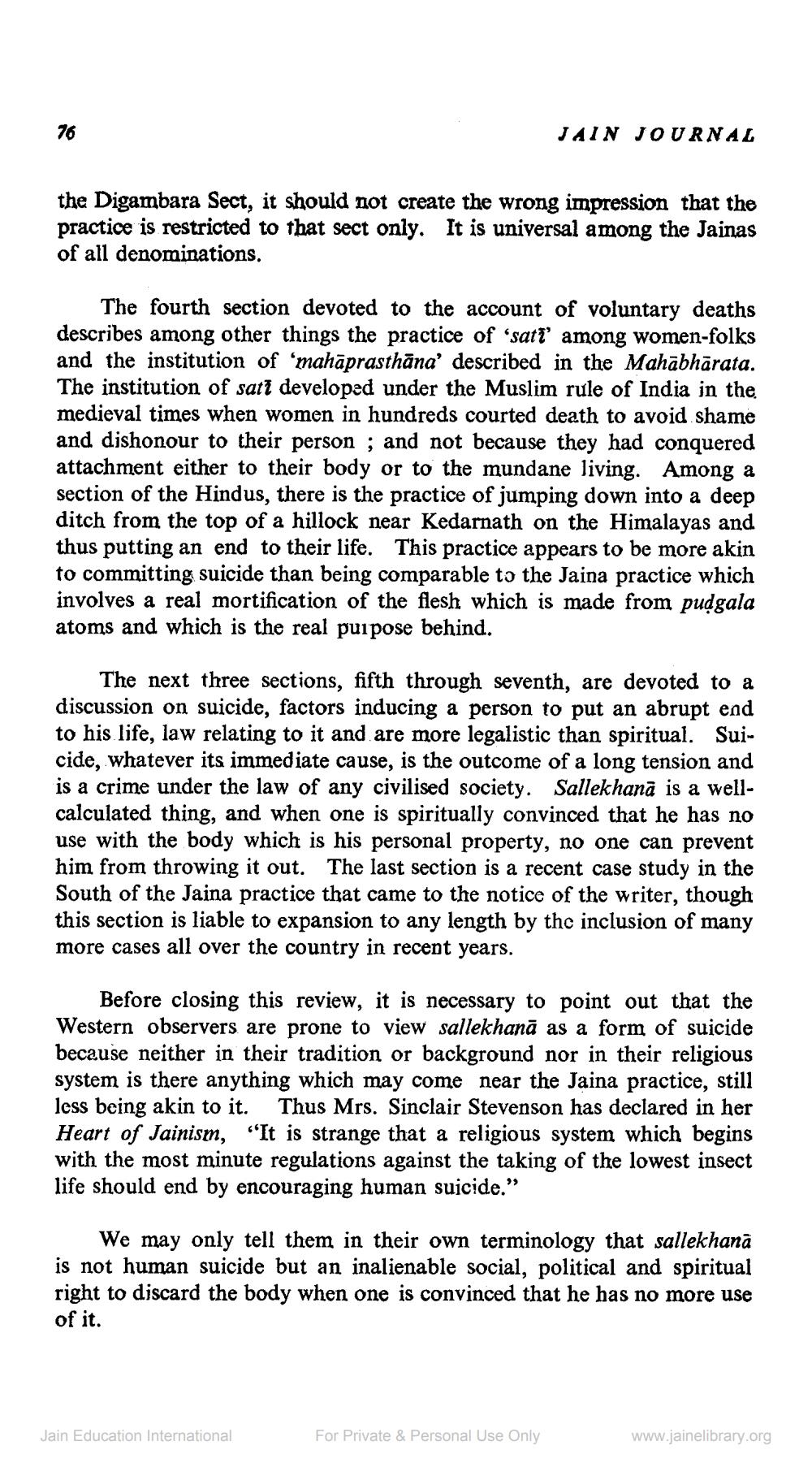Book Title: Jain Journal 1977 10 Author(s): Jain Bhawan Publication Publisher: Jain Bhawan Publication View full book textPage 6
________________ JAIN JOURNAL the Digambara Sect, it should not create the wrong impression that the practice is restricted to that sect only. It is universal among the Jainas of all denominations. The fourth section devoted to the account of voluntary deaths describes among other things the practice of ‘satt among women-folks and the institution of 'mahāprasthāna' described in the Mahābhārata. The institution of satī developed under the Muslim rule of India in the. medieval times when women in hundreds courted death to avoid shame and dishonour to their person ; and not because they had conquered attachment either to their body or to the mundane living. Among a section of the Hindus, there is the practice of jumping down into a deep ditch from the top of a hillock near Kedarnath on the Himalayas and thus putting an end to their life. This practice appears to be more akin to committing suicide than being comparable to the Jaina practice which involves a real mortification of the flesh which is made from pudgala atoms and which is the real purpose behind. The next three sections, fifth through seventh, are devoted to a discussion on suicide, factors inducing a person to put an abrupt end to his life, law relating to it and are more legalistic than spiritual. Suicide, whatever its immediate cause, is the outcome of a long tension and is a crime under the law of any civilised society. Sallekhanā is a wellcalculated thing, and when one is spiritually convinced that he has no use with the body which is his personal property, no one can prevent him from throwing it out. The last section is a recent case study in the South of the Jaina practice that came to the notice of the writer, though this section is liable to expansion to any length by the inclusion of many more cases all over the country in recent years. Before closing this review, it is necessary to point out that the Western observers are prone to view sallekhanā as a form of suicide because neither in their tradition or background nor in their religious system is there anything which may come near the Jaina practice, still less being akin to it. Thus Mrs. Sinclair Stevenson has declared in her Heart of Jainism, "It is strange that a religious system which begins with the most minute regulations against the taking of the lowest insect life should end by encouraging human suicide." We may only tell them in their own terminology that sallekhana is not human suicide but an inalienable social, political and spiritual right to discard the body when one is convinced that he has no more use of it. Jain Education International For Private & Personal Use Only www.jainelibrary.orgPage Navigation
1 ... 4 5 6 7 8 9 10 11 12 13 14 15 16 17 18 19 20 21 22 23 24 25 26 27 28 29 30 31 32 33 34 35 36 37 38 39
